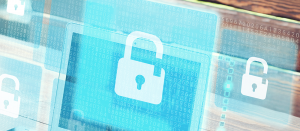As more companies seek to advance their cybersecurity measures and protect their data and customers, there’s a lot we as end users can do as well. Personal cybersecurity plays a critical role in an overall organization’s protections as well, be it your employer or a social network. For employers, you already know that helping workers understanding personal security online will significantly improve overall security. What’s important to consider is how they can best go about it.
Below are five quick tips for consumers and IT directors alike to advance personal cybersecurity and minimize risk for everyone.
5 – Install Anti-Malware Software
Even the best corporate firewall is sidelined by a phishing attack or corrupted file that an unknowing employee might install. Malware hides in the most insidious places and ransomware is fast becoming a personal favorite tactic of hackers to access secure data. By making sure you install anti-malware software on your devices you can reduce your risk of becoming infected significantly.
4 – Kill Your Zombie Accounts
How many social media accounts do you have? Now count again. Do you still have a MySpace account? When was the last time you logged into your Yahoo account? Did you know that ICQ is still alive and kicking? These forgotten accounts are called “zombie” accounts, and you might want to go back and headshot them before ancient credentials come back to bite you. Considering how infrequently the average person updates their passwords, you might even still use those old logins for other services.
FREE WEBINAR ON DEMAND: Biometric Trends for 2017
3 – Use Two-Factor Authentication
Most social networks, email providers, and other online accounts offer two-factor authentication (2FA) these days. Even SMS-based 2FA is significantly more advanced than password-alone security, helping to minimize your personal cybersecurity risk. Some companies, such as Google, even offer standalone Authentication apps that can provide 2FA for supported accounts.
2 – Make Your Passwords Less Complex
Recent updates to password best practices suggest that overly-complex passwords that are difficult to remember aren’t actually all that hard for a computer to guess. Rather than trying to use a different 14-character password made up of randomly selected letters, numbers, and symbols for every account, try using unusual combinations of easy to remember words, such as “ladyturnipadvantageous.”
1 – Adopt Biometric Authentication
Of course, the best way to improve personal cybersecurity is to do away with the cause behind 81 percent of all data breaches entirely. Switching from passwords to biometric authentication is becoming easier every day and more apps and devices adopt the technology. For secure accounts, using an advanced biometric authentication solution (not just Touch ID) will be a significant upgrade for not only securing access but being able to track authentication attempts and see who is access the account.





